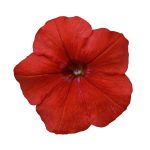Purslane, Red
$7.99
Discount per quantity
| Quantity | 3 - 8 | 9 - 14 | 15+ |
|---|---|---|---|
| Price | $7.75 | $7.51 | $7.19 |
| % Discount | 3% | 6% | 10% |
Description
Radiant Red Purslane: A Sun-Loving Gem for Every Garden
Welcome
We’re here because you and I both love bright, easygoing plants. Red Purslane delivers that joy in spades. In this guide, we’ll walk side by side through everything you need to know—what it looks like, why it shines, and exactly how to help it thrive. Let’s dig in!
The Plant at a Glance
- Botanical Name: Portulaca spp.
- Common Name: Red Purslane
- Type: Tender perennial grown as an annual in most areas
- Mature Size: 4–8 in. tall, up to 14 in. wide
- Bloom Time: Late spring through frost
- Flower Color: Deep ruby red, sometimes with a golden throat
- Light Needs: Full sun (6+ hours)
- Soil Needs: Well-drained, sandy or gritty mix
- Special Strengths: Heat, drought, and salt tolerance; low maintenance; pollinator-friendly
Description
A Living Carpet of Color
Red Purslane hugs the ground, sending out short, fleshy stems that weave into a soft, spreading mat. Each stem carries paddle-shaped leaves that feel cool and slightly waxy. Because the tissues are full of water, they hold up in blazing sunshine when other plants wilt.
Flowers That Pop
The blooms look like tiny, petal-packed cups—some single, some semi-double—each no larger than a quarter. They open with sunrise and tuck in as evening falls. Their red is rich and velvety, often glowing like lit coals at midday. Honeybees, little native bees, and hoverflies crowd the flowers for their easy nectar.
Habit and Growth Rate
Fast. That’s the best word. Give Red Purslane warm soil and full light, and it fills a 12-inch pot within weeks. In garden beds, it wanders between pavers, spills over rock walls, and covers bare soil like living mulch. Yet it never grows tall enough to block your view of other plants.
Texture and Contrast
The smooth leaves and satiny petals pair well with spiky grasses, fuzzy sages, and upright succulents. Planted en masse, Red Purslane becomes a bold red river weaving through gray foliage or pale gravel.
Why Gardeners Love Red Purslane
- Unbeatable Sun Tolerance
Instead of hiding from heat, this plant thrives in it. That makes it perfect for hot patios, pool decks, and south-facing beds. - Water Savings
Those plump leaves store moisture, so you water less. In drought-prone areas, that’s a gift. - Long Bloom Season
From late spring’s last cool breeze until the first frost, color stays strong. - Pollinator Magnet
Butterflies often stop by, and native bees appreciate the open faces of the flowers. - No Fuss
Few pests bother Red Purslane. It resists most diseases, needs no deadheading, and forgives the occasional missed watering. - Edible Leaves
Many Portulaca species have tangy, vitamin-rich foliage. Enjoy them fresh in salads or cooked like spinach—just confirm your specific cultivar is food-safe and chemical-free.
How to Care for Red Purslane
Site Selection
- Sun First. Choose a spot that basks in at least six hours of direct light. More light means thicker growth and extra blooms.
- Heat Matters. Soil warmth speeds germination and root spread. Wait until nights stay above 55 °F before transplanting.
Soil Prep
- Drainage Above All. Mix in coarse sand, pumice, or fine gravel if native soil feels sticky. Raised beds or shallow troughs work wonders.
- pH Flexibility. Red Purslane handles a range from 5.5 to 7.5 but prefers neutral ground.
- Nutrition. It’s not greedy. A small dose of balanced organic fertilizer at planting is enough for most summers.
Planting Steps
- Space Smartly. Set plugs or cell-pack starts 8–12 in. apart. They’ll knit together fast.
- Water In. Give a gentle soak to settle roots, then let soil surface dry before watering again.
- Mulch Lightly. A thin gravel layer reduces weed seeds and highlights the red flowers.
Watering Wisdom
- Start Strong. Water every two to three days during the first week while roots explore.
- Ease Off. Once established, switch to weekly deep soakings in garden beds. In pots, water when the top inch is bone-dry.
- Avoid Soggy Feet. Constant wetness invites rot. Lift containers on feet so excess water runs free.
Feeding and Fertilizing
- Less Is More. Too much nitrogen pushes leaves over flowers. Use a slow-release formula labeled for blooming annuals, applied once at mid-summer if foliage pales.
- Liquid Boosts. A half-strength seaweed or fish-emulsion spray every four weeks keeps color rich without overwhelming roots.
Pruning and Grooming
- Pinch for Density. Nipping the tips early encourages branching and thicker mats.
- Tidy Up. Old blossoms usually drop on their own, but you may pinch clusters to spark fresh buds.
- Revive Late Summer Plants. If stems grow sparse, cut back by one-third and water well; new shoots will fill gaps in two weeks.
Overwintering
- Annual in Frost Zones. Once temperatures dip near 40 °F, Red Purslane slows. Let it finish its show, then compost or rake out spent plants.
- Indoor Cuttings. Snip a few stems in early fall, root them in moist sand, and keep under bright light indoors. You’ll have fresh starts for spring.
Propagation
- Stem Cuttings
- Slice 3-inch tips.
- Air-dry for one hour to callus.
- Insert into sandy mix, keep barely damp. Roots appear within 10 days.
- Seeds
- Sow on top of warm, moist soil; they need light to sprout.
- Cover flats with a clear dome to hold humidity until germination.
- Thin seedlings to prevent damping-off.
Common Challenges and Solutions
| Issue | Symptom | Simple Fix |
|---|---|---|
| Root Rot | Lower stems turn mushy | Improve drainage; water less often |
| Aphids | Sticky leaves, curled growth | Blast with hose; apply insecticidal soap |
| Flower Drop | Buds fail in cloudy weather | Wait for sun; pursue full-sun placement |
| Leggy Growth | Long stems, few blooms | Pinch tips; move to brighter spot |
Companion Planting and Design Ideas
- Rock Gardens: Pair with golden sedum for a jewel-box color mix.
- Hanging Baskets: Combine Red Purslane with trailing blue lobelia for lively contrast.
- Edible Beds: Plant along edges with thyme, dwarf peppers, or rainbow chard. The red blooms highlight edible diversity.
- Pollinator Rows: Mix among zinnias and cosmos to keep insects busy from dawn to dusk.
Sustainable Touches
- Water Catchment. Channel roof runoff to a rain barrel and use it on drought-tolerant purslane first.
- Bee Habitat. Leave a sunny, bare patch nearby so ground-nesting bees have easy homes.
- Organic Matter. Top-dress with finished compost at season’s end. It feeds soil life and improves next year’s bed.
Mini Harvest Tips (If Edible)
Many gardeners snack on raw purslane leaves in place, enjoying their bright, lemony bite. Harvest early morning for the crispest texture. Rinse gently, chop, and stir into salsa, flatbreads, or omelets. Light cooking softens the mild tartness and fits well in stir-fries.
Important: Confirm your Red Purslane variety is labeled edible and untreated by chemicals before munching. When in doubt, grow from organic seed and skip sprays.
Troubleshooting Quick-Start Guide
- Plant Won’t Flower
- Check sunlight. Less than five hours? Relocate.
- Are you overfeeding? Flush pot and switch to bloom fertilizer.
- Leaves Yellow
- Possible overwatering. Let soil dry.
- Could be nutrient shortage. Give low-dose fish emulsion.
- Stems Collapse Overnight
- Look for slug or snail trails. Hand-pick or set beer traps.
- Slow Start in Spring
- Soil might still be cold. Wait one more week; warmth is the key.
- Uneven Mat
- Snip long stems and pin cuttings into bare spots. They’ll root where they touch.
Let’s Bloom Boldly Together
Your garden deserves plants that work hard and look fabulous. Red Purslane checks both boxes with bright color, hearty spirit, and almost effortless care. Plant it once, give it the love we’ve outlined, and watch it paint your beds and containers in vivid scarlet all season long. Here’s to bold blossoms, easy mornings, and the shared joy of growing something beautiful—side by side.
Additional information
| Weight | N/A |
|---|---|
| Options | Unrooted Cutting – 9 Count, Starter Plug – 3 count, 4 in. (16.9 fl. oz.) Pot |





